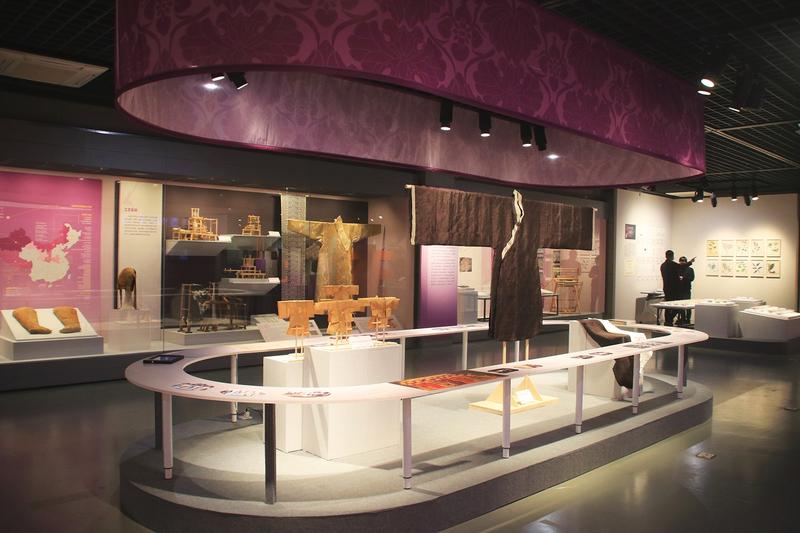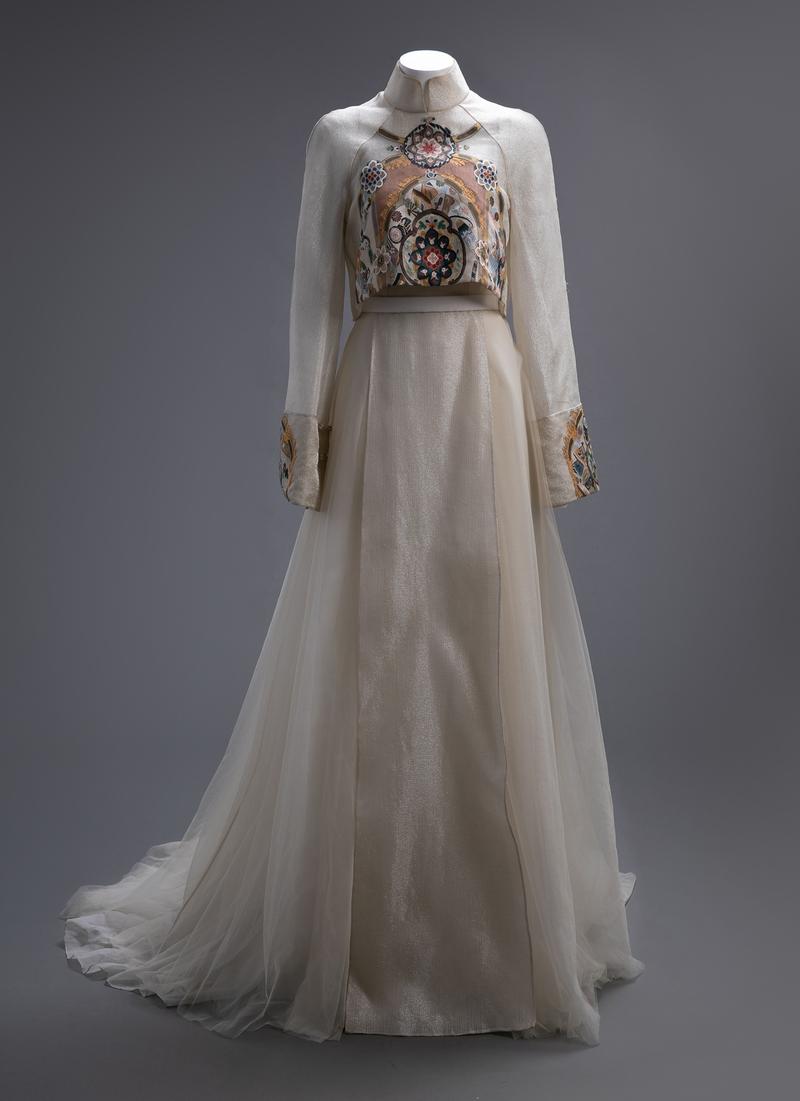Book celebrates 30th anniversary of silk museum and its growing cultural significance, Ma Zhenhuan reports.
 Items related to silk clothing are displayed at the China National Silk Museum in Hangzhou. The museum's collection has expanded in the past three decades. (PHOTO PROVIDED TO CHINA DAILY)
Items related to silk clothing are displayed at the China National Silk Museum in Hangzhou. The museum's collection has expanded in the past three decades. (PHOTO PROVIDED TO CHINA DAILY)
The first book to comprehensively catalog the collection at the China National Silk Museum was released on International Museum Day on May 18.
The book, Highlights of the Collections in China National Silk Museum, which has research and educational significance in the fields of silk art, fashion, textile design, was published to celebrate the 30th anniversary of the museum, which is located in Hangzhou, East China's Zhejiang province.
We hope to make our cultural relics appreciated by people all over the world through the digital platform.
Zhao Feng, director of the China National Silk Museum
Covering ancient to contemporary times, inside China and outside, the book describes how the museum started with its silk collection and expanded to modern textiles, contemporary designs, global fashions and other fields, gradually establishing a collection of ancient and modern Chinese and foreign textiles and clothing. All collections in the book are presented in high-definition pictures, with detailed introductions, which contain both artistic beauty and cultural meaning.
"For more than 25 years since the Metropolitan Museum of Art awarded Zhao Feng a Sylvan and Pamela Coleman Fellowship in 1997-98, several other members of the Department of Asian Art and I have benefited greatly from Zhao Feng's scholarly focus on China's extraordinary tradition of silk production," says Maxwell K. Hearn, director of the Asia department at the Metropolitan Museum of Art, New York.
 Two books celebrate the 30th anniversary of the China National Silk Museum. (PHOTO PROVIDED TO CHINA DAILY)
Two books celebrate the 30th anniversary of the China National Silk Museum. (PHOTO PROVIDED TO CHINA DAILY)
Zhao, director of the China National Silk Museum, talks of its 30 years of ups and downs in another book, Research Museum Development Path of China National Silk Museum, from a research perspective.
The book describes how the museum established a collection of textiles and clothing both at home and abroad, a communication system with equal emphasis on tradition and fashion, a research system with scientific, technological and humanistic features, the protection and inheritance system at the museum, and the research platform of the Silk Road culture.
The China National Silk Museum also held an exhibition to commemorate its 30th anniversary, starting from April 15. The exhibition, which is themed on the museum's evolution over the past three decades, features sections on the ancient Silk Road, traditions surrounding silk and outstanding silk creations from around the world.
The museum's collection has expanded significantly over the past 30 years, from more than 800 items when it first started to the current 70,000. The museum's annual visitor numbers have also risen from 100,000 to more than 700,000 during this period.
The museum, which is a UNESCO World Heritage center, also features exhibits related to the protection, restoration and utilization of silk, and its research system centered on fibers, dyes and craftsmanship.
 A dress designed by Xiong Ying is displayed as part of the anniversary celebrations in Hangzhou. (PHOTO PROVIDED TO CHINA DAILY)
A dress designed by Xiong Ying is displayed as part of the anniversary celebrations in Hangzhou. (PHOTO PROVIDED TO CHINA DAILY)
Visitors to the exhibition will also learn about how the museum has been cooperating with countries and regions along the ancient Silk Road through online platforms and international exhibitions and activities.
The Silk Road Online Museum is a digital museum initiated by the national silk museum in association with 40 other museums in China and overseas. An online curating competition for 2022 was launched on April 15 to showcase collections of the museums involved in the project.
"We hope to make our cultural relics appreciated by people all over the world through the digital platform," says Zhao.
At present, the competition has aroused the attention and participation of more than 120 colleges and universities, and more than 20 museums and designers. More than 600 teams have signed up, with the total number of participants exceeding 1,000.
The China National Silk Museum, the first museum of its kind in the country, boasts a total exhibition space of 42,286 square meters.
"Six years were spent in establishing the museum, from 1986-91. After 30 years of construction, from 1992 to 2022, the museum has left many proud memories in its history," says Zhao.
Situated at the foothills of Lianhua Peak of Yuhuang Mountain, this enchanting museum has made remarkable achievements in many fields, such as collecting silk treasures, holding domestic and foreign exhibitions, protecting textile relics, inheriting sericulture skills, silk science education and promoting silk culture. China's silk culture dates back to its ancient civilization.
Fang Xiaoying in Hangzhou contributed to the story.
Contact the writers at mazhenhuan@chinadaily.com.cn


